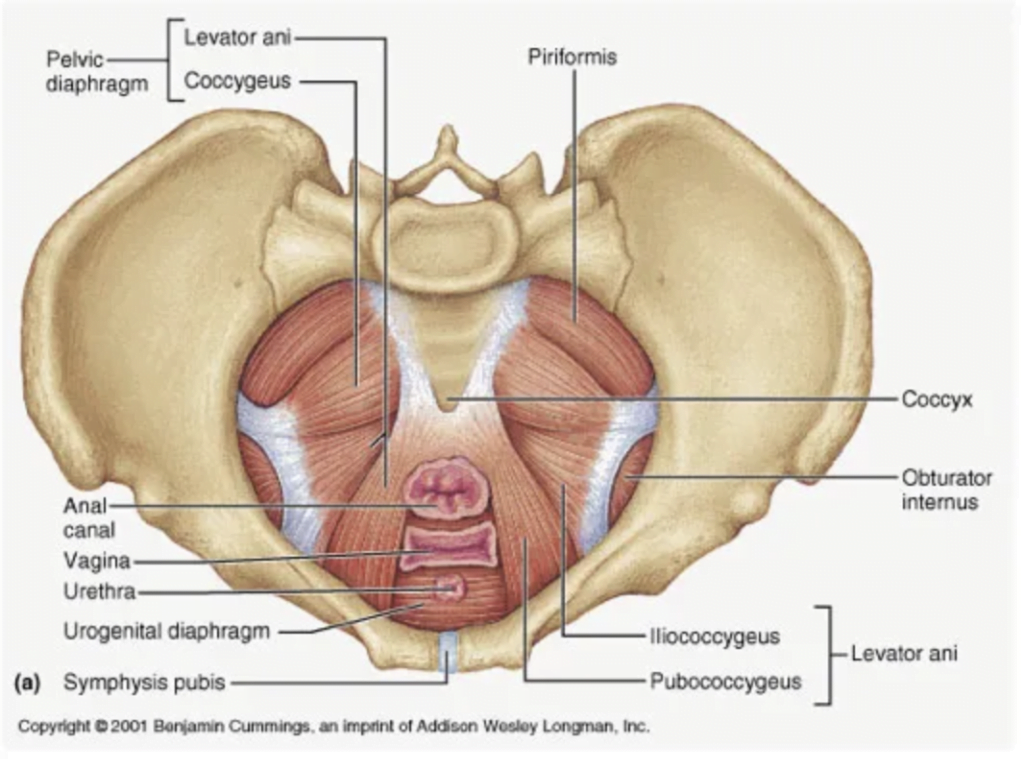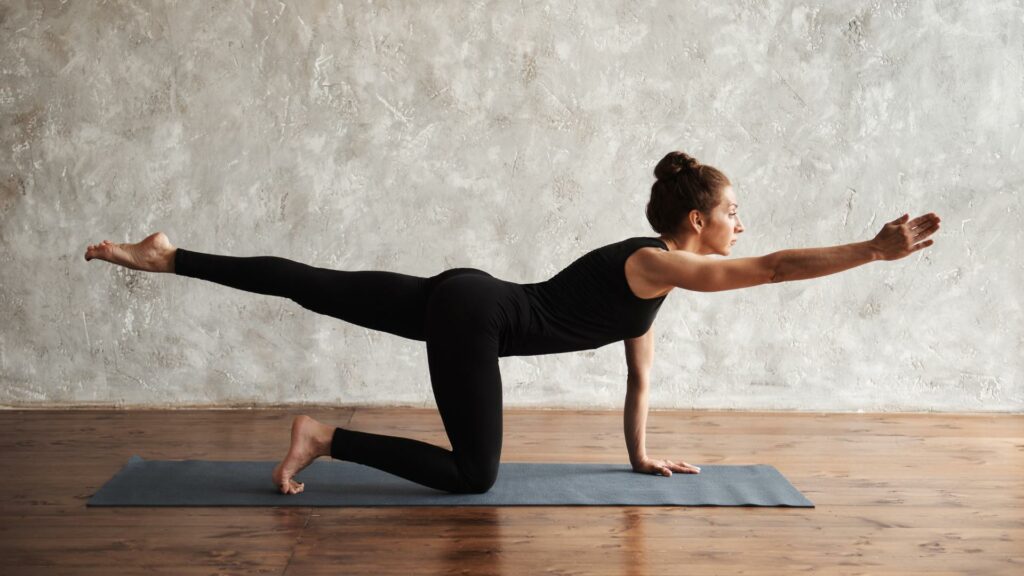The pelvic floor is a complex network of muscles, tissues, and ligaments.
Anyone who’s experienced issues with their pelvic floor understands why it’s such an important group of muscles. A strong pelvic floor contributes to things like bladder control, sexual health, and core stability.
Like any other muscle group, the pelvic floor requires regular exercise to maintain its strength and functionality.
We put together this simple guide to understanding the pelvic floor, the benefits of keeping it healthy, and the exercises that can help achieve this.
Let’s dive in!
Benefits of Performing Pelvic Floor Exercises
Before we get into some specific exercises for your pelvic floor, let’s highlight why maintaining strong and healthy pelvic floor muscles matters.
Here are some significant benefits you can expect from a regular and optimal regimen:
- Improved Bladder and Bowel Control: The pelvic floor muscles play a crucial role in bladder and bowel control. Regular exercises can help reduce urinary incontinence and the urgency to use the bathroom.
- Enhanced Core Stability: The pelvic floor muscles are an integral part of the body’s core. Strengthening these muscles contributes to overall core stability which is essential for optimal athletic performance and everyday movements.
- Reduced Lower Back Pain: A strong and responsive pelvic floor can offer better support to your lower back, potentially alleviating pain and discomfort in this area.
- Support During and After Pregnancy: Pelvic floor exercises are particularly beneficial for women during and after pregnancy. They can help prepare the body for childbirth and also assist in recovery postpartum.
- Proactive Preventive Measure: Regular pelvic floor training can act as a preventative measure, reducing the risk of issues such as prolapse and incontinence later in life.
RELATED READING: Guide to Return to Running Postpartum
Types of Pelvic Floor Exercises
Kegel Exercises
Kegel exercises are among the most well-known and widely recommended pelvic floor exercises.

Follow these steps to perform a kegel exercise:
- First, you need to locate your pelvic muscles. Looking at an image (see above) or using some cues below may help you find them.
- Some common cues to help you engage your pelvic floor muscles are:
- Imagine a flower blossom closing and opening
- Lift and drop a blueberry via your vagina (best for people with female gynecology)
- Close and open the curtains of your labia (best for people with female gynecology)
- Shorten the line from your anus to your urethra, then relax that line.
- Imagine you are walking in and out of cold water
- Imagine stopping and starting the flow of urine
- Once you’ve identified these muscles, you contract them for a few seconds, then release them fully. NOTE: It is just as important to learn how to release these muscles fully as it is to learn how to contract them.
- Try to keep your glutes and other hip muscles soft while maintaining a good flow of breath during your pelvic floor contractions. Holding your breath can work against the pressure of your pelvic floor and end up causing more issues.
- Repeating this exercise several times a day can significantly strengthen your pelvic floor.
These exercises can be modified depending on your current level of fitness and pelvic strength.
- Beginners: Start with a shorter hold time. Contract your pelvic floor muscles for 2-3 seconds, then relax for 2-3 seconds. Repeat this for 5 repetitions, twice a day.
- Intermediate: Increase the hold time. Contract for 5-10 seconds, then relax for 5-10 seconds. Do this for 10 repetitions, three times a day.
- Advanced: Add more repetitions. Contract for 10 seconds, then relax for 10 seconds, and do this for 20 repetitions, four times a day. OR Add speed via quick contract and relax repetitions to work on your reaction time.
RELATED READING: What is Pelvic Floor Physiotherapy?
Squats
Believe it or not, the common squat is also a great exercise for the pelvic floor. When done correctly, squats engage the pelvic floor muscles along with the thighs and glutes. Here is how to perform a squat:
- Stand with your feet shoulder-width apart.
- Lower your body by bending at the hips and knees, like you’re sitting on an imaginary chair. Your sits bones should widen and your pelvis expands as you actively pull yourself down into your squat.
- Remember to keep your back straight and your knees aligned with your feet.
- Push up through your whole foot to return to a standing position, making sure to contract your pelvic floor muscles as you do so.
- Repeat this for 10-15 repetitions, two to three times a day.
If you’re finding a standard squat too difficult or too easy, try out one of these modifications:
- Beginners: You can use a chair for support. Sit down and stand up from the chair while engaging your pelvic floor muscles.
- Intermediate: Perform a standard squat as described before, but add more repetitions.
- Advanced: Try a single-leg squat. Stand on one leg, squat down as far as you can, then push back up to standing.
Bird Dog

The bird dog exercise, common in yoga and Clinical Pilates, is another excellent way to engage and strengthen the pelvic floor.
To perform this exercise, follow these steps:
- Start on all fours with wrists aligned under shoulders and knees under hips.
- Find a subtle ~25% engagement of your pelvic floor and deep abdominals, and extend your right arm and left leg simultaneously.
- Keep your body stable, with your head, spine, and tailbone aligned. Breathe!
- Hold for 5-10 seconds before returning to the starting position.
- Repeat the exercise with your left arm and right leg.
- Perform 10 repetitions on each side, once or twice a day
Bird dog exercises can also be modified to match your current fitness level:
- Beginners: Rather than extending your arm and leg, simply lift and hold them in the starting position. This will still engage your pelvic floor.
- Intermediate: Extend only one limb at a time, either your arm or leg.
- Advanced: Add a resistance band to your ankles or wrists for added challenge.
Remember, like any other exercise regimen, consistency is key when it comes to pelvic floor exercises.
Also, if you’re recovering from an injury or surgery, or if you’re pregnant, it’s important to consult with a healthcare professional before beginning any new exercise routine.
Additional Exercises to Strengthen Pelvic Floor

Bridge Pose
The bridge pose is a popular yoga exercise that also serves as an effective pelvic floor exercise.
To perform this exercise, you lie on your back with your knees bent and feet flat on the floor. Then, keeping your arms flat by your sides, you push your hips upwards, lifting your pelvic floor as you do so. Hold this position for a few seconds before slowly lowering your hips back to the floor.
Dead Bug Exercise
The dead bug exercise, despite its peculiar name, is highly effective for pelvic floor conditioning.
Lie on your back with your knees bent, feet flat on the floor, and arms extended towards the ceiling. Engage your pelvic floor and deep abdominals, and while maintaining this contraction, slowly lower one arm and the opposite leg towards the floor. Breathe! Return to the starting position and repeat with the other arm and leg.
When to Seek a Pelvic Floor Physiotherapist
There are several circumstances when it might be advisable to seek out the specialized services of a pelvic floor physiotherapist.
- Persistent Lower Back Pain: If you experience chronic lower back pain that does not improve with general physiotherapy or pain management, a pelvic floor physiotherapist may be able to help. They can address any underlying pelvic floor dysfunction that may be contributing to your discomfort.
- Pre and Post-Pregnancy: During pregnancy and after childbirth, women often experience changes in their pelvic floor function. If you are preparing for childbirth or have recently given birth and are experiencing symptoms such as incontinence or discomfort, a pelvic floor physiotherapist can provide targeted exercises and strategies.
- Pelvic Pain or Discomfort: If you have unexplained pelvic pain, or discomfort during sexual intercourse, sitting, or while performing certain activities, it may be due to issues in your pelvic floor muscles and/or alignment of your pelvic bones. A pelvic floor physiotherapist can help identify and address these issues.
- Incontinence: If you’re having trouble controlling your bladder or bowel movements, it could be a sign of pelvic floor dysfunction. A pelvic floor physiotherapist can help you strengthen these muscles and improve control.
- Post-Surgery Rehabilitation: After certain surgeries, such as prostate surgery in men or gynecological surgery in women, you may need to strengthen your pelvic floor muscles. A pelvic floor physiotherapist can guide your recovery and help you regain strength and control.
Pelvic floor physiotherapy is a specialized field, and practitioners have specific training in diagnosing and treating conditions related to pelvic floor dysfunction.
RELATED READING: What Happens at a Pelvic Floor Physiotherapy Appointment?
Conclusion
Pelvic floor exercises are an excellent way to strengthen your core, improve bladder control, improve sexual health, and enhance overall well-being.
They can be adapted to suit varying fitness levels and can easily be incorporated into your daily routine.
But as with any exercise, it’s important to perform these exercises correctly to reap their full benefits. If you’re looking for support or guidance with your pelvic floor health, come visit the pelvic floor physiotherapists at Reformotiv in Vancouver.
Sources:
https://www.physio-pedia.com/Pelvic_Floor_Exercises
https://www.healthline.com/health/fitness-exercise/pelvic-floor-exercises
https://www.ncbi.nlm.nih.gov/pmc/articles/PMC4462060/
https://www.ncbi.nlm.nih.gov/books/NBK559246/
How We Reviewed This Article:
This article was reviewed by one of the physiotherapists here at Reformotiv. Our team is continually learning and monitoring the health and wellness industry to keep informed.

